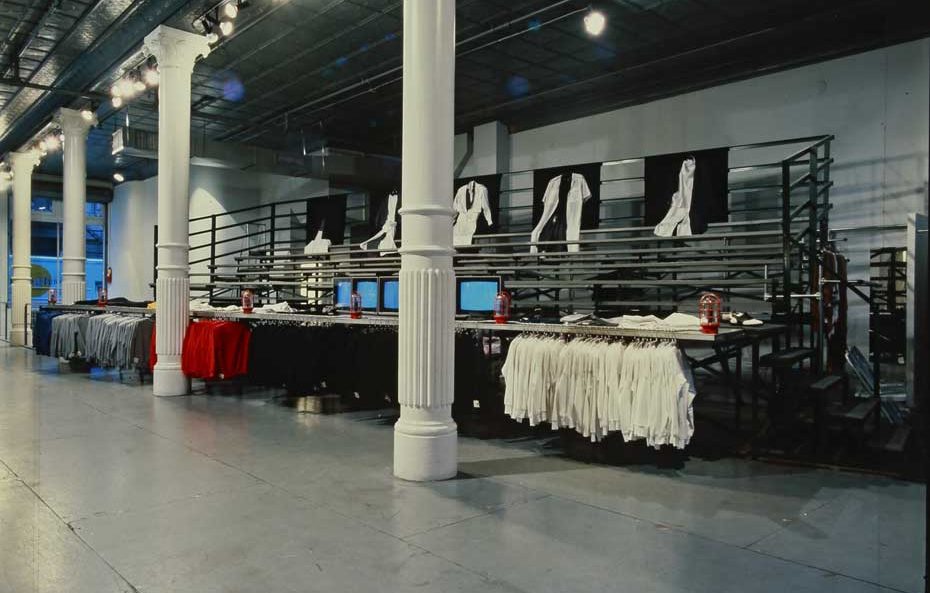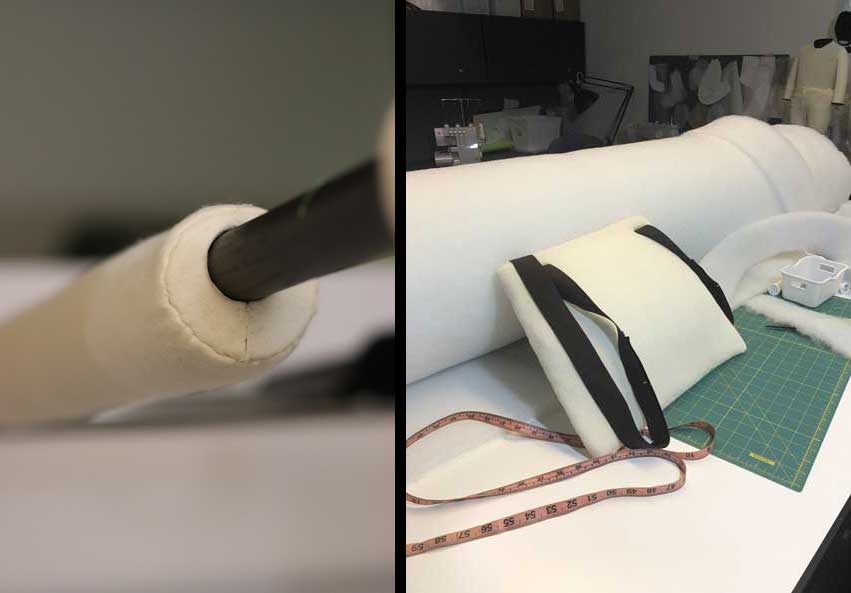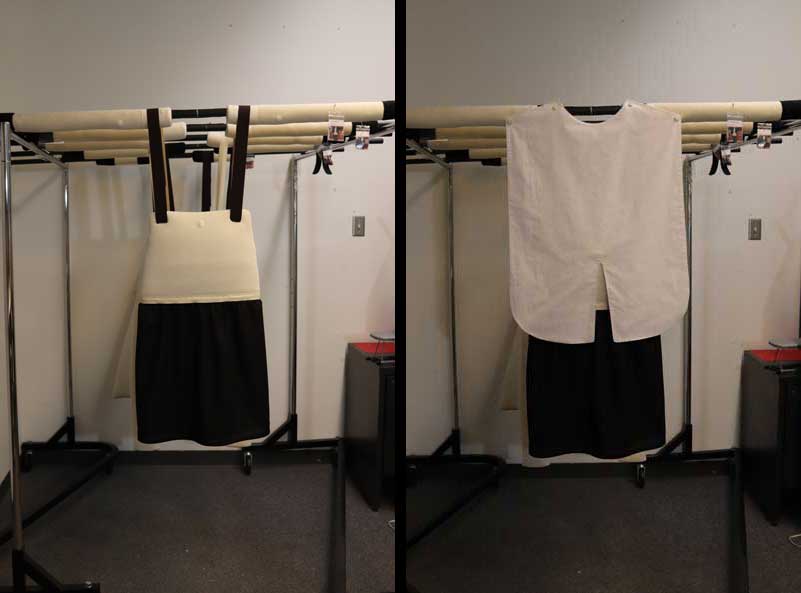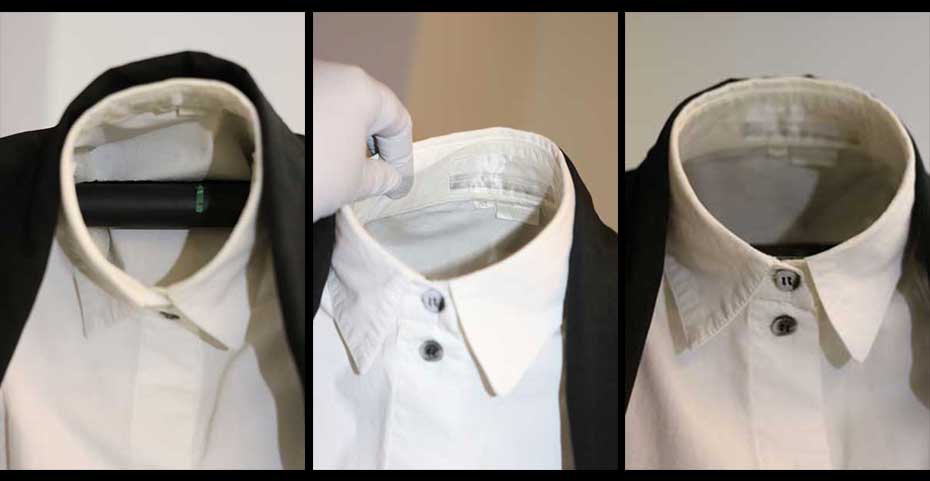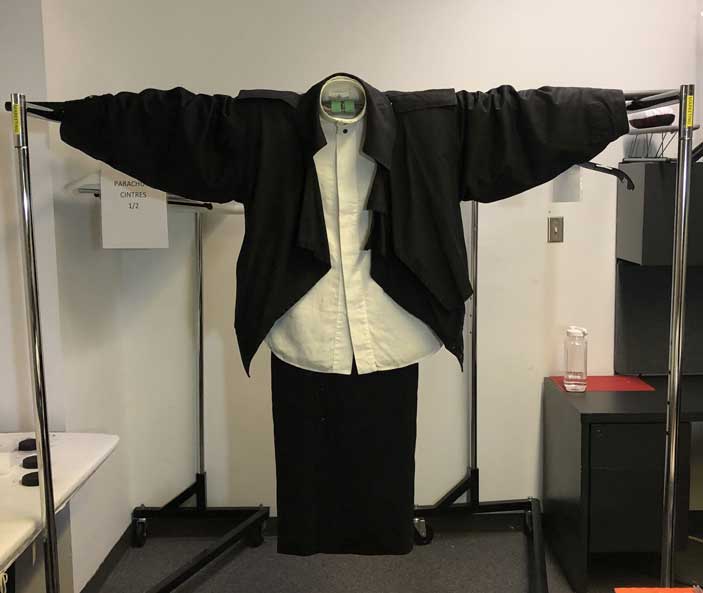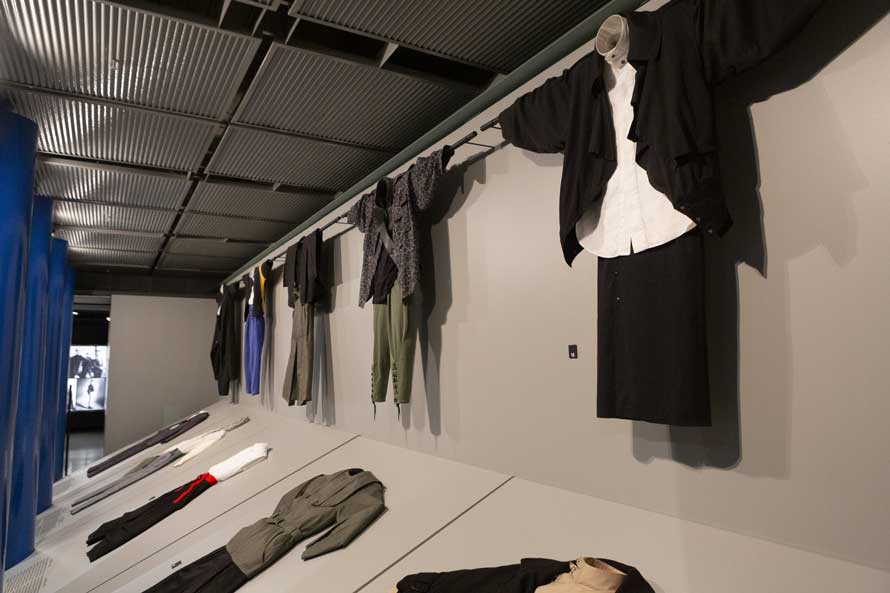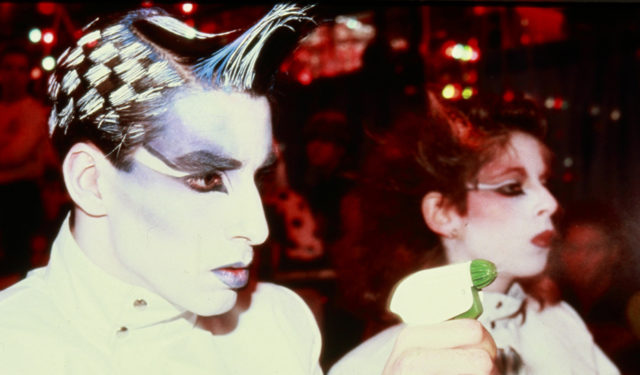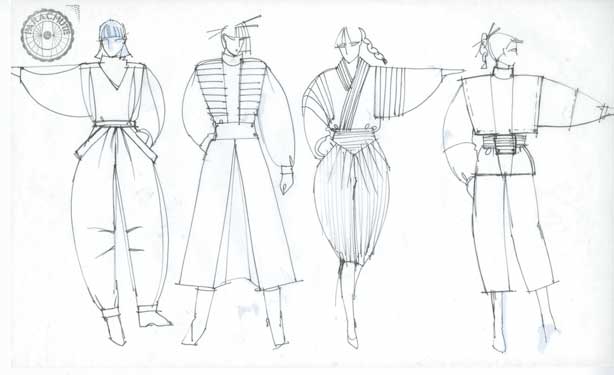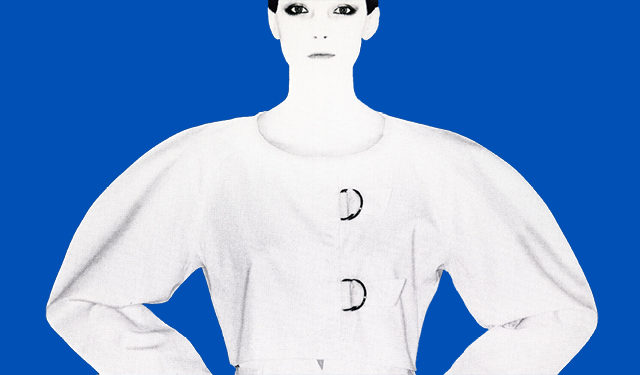Parachute: The costume mounting team sets a high bar!
A look behind the scenes as the costume mounting team prepares clothing for display in the exhibition Parachute.
November 30, 2021
A focal point of the upcoming Parachute: Subversive Fashion of the ‘80s exhibition is the re-creation of the label’s iconic in-store experience. To reproduce the graphic style of Parachute, the assigned team—Caroline Bourgeois, Patrick Migneault and myself—created several custom-made supports using new presentation techniques. These included displaying the selected outfits on inclined platforms and hanging them from rods. My assignment was to take up the second challenge.
At first glance, the use of dowels may appear to be a simple, straightforward display technique. However, as we will discover, there is much more than meets the eye!
Generally, rods are a minimalistic method of display best suited for lightweight, straight-cut garments such as kimonos, as these will stay in place when draped over a horizontal bar.
However, unlike kimonos, the hanging Parachute outfits are comprised of many superimposed elements. These include jackets and shirts with sleeves that do not extend at a right angle, which often have large shoulder pads and heavy fastenings adding weight to the front of the garment. This was the first challenge I encountered: once placed onto the rod, the garments had a tendency to collapse forward and lose their iconic shape. To counter this effect and, above all, alleviate strain, it was necessary to create and adapt an internal structure for each outfit. The second challenge was devising a system for hanging pants and skirts on rods.
The process
For this particular ensemble, comprised of a white shirt, black coat and asymmetrical navy pencil skirt, it was necessary to create multiple supports and underpinnings.
The first step in the process was creating the rod itself. Patrick Migneault, Preparator, Exhibitions, cut and painted custom wooden dowels. These were then covered with a protective film and padded with polyester wadding to help ease the pressure created at the top of the garments when they were hung on the rods.
Working in layers, I gradually built up the padding surrounding the rod into the shape of an oval. By concentrating the padding towards the sides and bottom, with less bulk on the top, I was able provide additional support while ensuring a visually smooth transition of the garment across the rod. Certain areas of the padded rod were then covered with felt, which, due to the textured nature of the fabric, helped stabilize the garment on the dowel.
To securely hang the pencil skirt, it was necessary to make a hanging mount. Patrick Migneault and I originally tried a 2D shape cut out of Ethafoam®. However, after initial testing, I observed that the front and back of the skirt had a tendency to stick together. I resolved this issue by padding the Ethafoam® base and creating a subtle 3D body shape that allowed the garment to drape more naturally, creating the desired effect. In this particular case, a cotton petticoat was also added to support the bottom of the skirt without making it too rigid.
The skirt, anchored at the waist, required a precise fit to secure it in place without creating tension. Given its weight, I used magnets to provide additional support along the waistline. Aligning the magnets positioned on top of the skirt with magnets attached to the padded mount underneath created adequate support. Lastly, adjustable cotton straps with Velcro enabled me to adjust the skirt to the proper height.
When the somewhat diaphanous shirt was mounted, the dark skirt could be seen through it, ruining the shirt’s uniform colour. I was able to resolve the transparency issue by inserting an opaque white panel that followed the exact cut of the garment, thus restoring the brilliance and visual impact of the shirt.
Particular attention was given to all collars since these had a tendency to collapse forward. The images above are of a different outfit (EX2020-04.002-03, X2020-04.001-16.1-2) and illustrate the result of my intervention. You can see that individual patterns were created for each collar to construct custom-made invisible internal structures using Mylar® (a chemically stable plastic). These inserts provided support, enabling collars to retain their shape.
At long last, the mount system was complete and the outfit was ready for display!
Every costume mounting project comes with unique challenges of preventive conservation. In this instance, it was finding ways to provide sufficient support for the garments while also letting them hang naturally, reflecting the relaxed and graphic ethos of the Parachute brand. By rethinking the traditional rod display technique and implementing creative solutions, I was able to showcase each of the designer outfits in a safe, controlled manner that respected museum standards.
The final result—and we hope you agree—is a bold display style that emphasizes the cut of each garment, enhancing the visitor experience and adding to the narrative of the Parachute exhibition.

